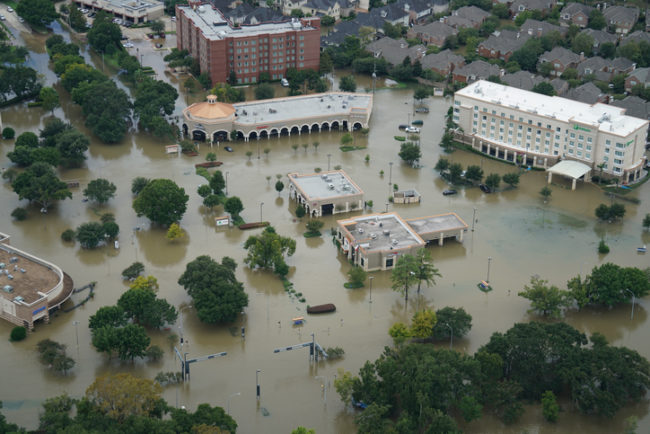Hurricane Harvey has decimated the great city of Houston, displacing residents from their homes — and in many cases — destroying homes, investments, and in some scenarios, taking the life of a loved one. It will take billions of dollars to repair Harvey’s destruction, and many people will never replace what the hurricane took. Even with that, the event has more bad news. Not only did Harvey destroy property, and in some instances take human life, it also has created a toxic environmental nightmare.
Houston’s two dozen former and current EPA Superfund sites have unleashed dangerous toxic and carcinogenic compounds like lead, arsenic, polychlorinated biphenyls, creosote, and benzene. Aside from their obvious risks and effects, they can also contaminate the hundreds of thousands of private wells where the testing is the responsibility of the private landowner — not the City of Houston. As with almost any Superfund site comes complications associated with allocation among potential responsible parties (PRPs). In Houston’s case, cleanup issues that were already complex pre-storm have only exponentially increased due to the strength of Harvey and its release and movement of chemicals and pollutants near and far.
Further, damaged refineries and other oil facilities have reportedly released more than two million pounds of hazardous substances into the air, including nitrogen oxide and benzene. Preliminary air sampling in the area where releases occurred showed concentrations of up to 324 parts per billion of benzene (i.e., this is a level where people are recommended to wear breathing safety apparatuses). Underground storage tanks and sewer systems are also threatened — and Houston’s sewer systems have long struggled with overflows.
Exposure to these dangerous chemicals and substances have been tied to various serious diseases and ailments, ranging from liver and bone marrow damage to cancer to central nervous system deficiencies. What is of great concern is that it isn’t yet known how long some communities have been and will be exposed to these pollutants, and at what sustained concentrations. The main concern now is how these exposures will play into long-term health in the area.
We anticipate that toxic tort and environmental claims and lawsuits will be commenced, and we have already seen the first: just last Thursday, police officers and fire fighters filed a lawsuit against a chemicals company based on allegations of negligence in securing chemicals at the site and preventing a fire from the combustion of the chemicals. Harvey cut the electricity at the plant, which turned off the refrigerators that stop volatile organic peroxide from combusting when it warms.
Harvey’s devastation not only lies in the force of the water that it pushed and carried, but in the toxic chemicals that it picked up, displaced, and released along the way. Exposure to these pollutants can have lasting injurious effects as well as making environmental cleanup efforts and allocation of liability extremely challenging — challenges that will live on well after Harvey’s waters recede.

